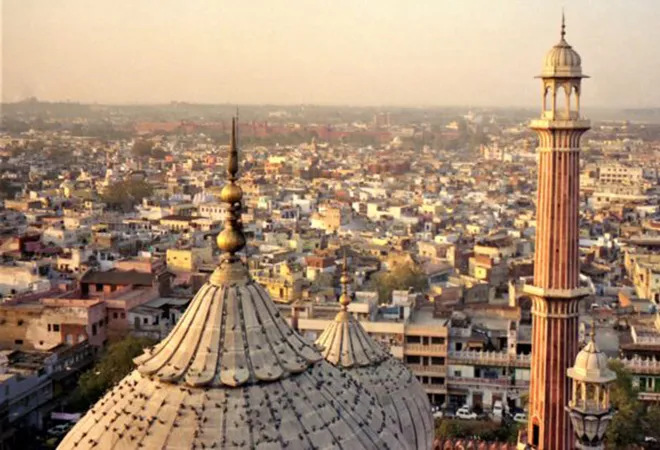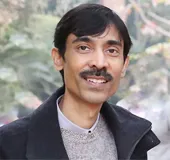
Delhi’s development over the years has been guided by a series of master plans. The utilisation of land for various purposes (i.e., residential, commercial, industrial, recreational, utilities, and facilities), or the built and natural landscape seen in the city today is due to the implementation of proposals provided in successive master plans. With implementation, many of the city’s requirements and challenges have been addressed.
The master plan process is viewed as static as its vision for the city is for a 20-year period. Whereas, urbanisation is a dynamic process, and its impact is felt in various ways every day.
On the one hand, numerous social and economic benefits are derived. At the same time, negative consequences of urbanisation are causing a decline in quality of life. The hassle associated with travelling, housing shortages and infrastructure deficiencies, inferior air quality, land use violations, and growth of informal areas, are some prominent problems prevailing in Delhi.
2021-41 Master plan
The upcoming fourth master plan for Delhi for the period 2021-41 offers an opportunity to address emerging challenges of urbanisation. Its draft has been made available in the public domain by the Delhi Development Authority (DDA), which will be finalised after reviewing public suggestions/objections.
The proposed vision mentioned in the draft plan is to “Foster a Sustainable, Liveable, and Vibrant Delhi.” To achieve the vision, proposals have been drafted with respect to environment, economy, heritage, culture and public spaces, shelter (housing) and social infrastructure, transport and mobility, and physical infrastructure. In addition, the draft provides frameworks for spatial development, monitoring and evaluation, and development control norms.
A review of proposals for improvement and development of the housing sector helps in understanding future housing policies for Delhi.
The planning, development, management, and governance processes followed over the years, as well as the social and economic condition of people, have shaped the current housing sector in Delhi. The present form is characterised by a mix of low-rise planned residential areas, unaesthetic looking houses, and pockets of informal areas characterised by unsafe structures.
The planning, development, management, and governance processes followed over the years, as well as the social and economic condition of people, have shaped the current housing sector in Delhi. The present form is characterised by a mix of low-rise planned residential areas, unaesthetic looking houses, and pockets of informal areas characterised by unsafe structures.
The demand for houses is growing by the day, and supply of new as well as affordable houses is lagging. These are important reasons for the proliferation of slums and unauthorised colonies in Delhi, as well as increasing population densities in urban villages and peri-urban areas of the city. It is estimated that Delhi’s total population will be between 28 and 30 million by 2041, and nearly 3.5 million dwelling units will be required by 2041.
To meet the future demand, the draft plan suggests regeneration of existing housing stock in planned and unplanned areas, creation of new stock in greenfield areas, and promotion of rental housing. The private sector is expected to play a major role in the supply of houses.
In existing planned areas, the effort will be to increase population densities through optimal utilisation of available land and creation of new units, including group housing. In other areas, slums will be improved through in-situ rehabilitation, while in unauthorised/resettlement colonies/urban villages, in addition to overall improvement, accessibility will be improved for movement of emergency vehicles (ambulances, fire engines).
Unauthorised colonies (UCs) will be improved as per regeneration schemes prepared by land/property owners or resident welfare associations (RWAs), and will be according to prescribed development norms pertaining to accessibility (road width), form of development (shape and boundary), parking, social infrastructure (school, dispensary). The Central and State government are already pursuing the work related to regularisation of UCs and provision of basic amenities.
In greenfield (vacant) areas, land will be acquired through pooling for development of multiple housing typologies (about 2 million dwelling units), such as affordable rental housing, small format housing of 40-60 square metres, retirement homes, etc.
In greenfield (vacant) areas, land will be acquired through pooling for development of multiple housing typologies (about 2 million dwelling units), such as affordable rental housing, small format housing of 40-60 square metres, retirement homes, etc.
To cater to needs of the large migrant population (working women and men, students), a variety of non-ownership (or rental) affordable housing options are proposed, such as serviced/studio apartments, dormitories, hostels, etc. In addition to implementing new government projects on public lands, as well as utilisation of available vacant public housing stock, incentives will be given to private companies for construction of rental houses.
For people without a home, i.e. those living on the streets, under flyovers, and other public places, it is mentioned that night shelters will be developed at various places in the city. Existing buildings (rail and bus terminals, wholesale/retail markets, freight complexes) will also be utilised for this purpose.
Conclusion
To conclude, the above-mentioned proposals for improvement and future development of the housing sector in Delhi address many concerns, including those pertaining to inclusion, liveability, and sustainability.
For example, the plan offers ideas for reforming housing in informal areas, construction of new houses, and utilisation of existing vacant houses to meet needs of various sections of society, including migrants. However, the application of similar ideas on the ground in the past (as proposed by previous master plans) has not been easy. This is also an important reason for the repetition of most proposals in the current draft plan.
- The adverse impacts of extending Delhi’s urbanisable area into the peripheral (or peri-urban) areas inhabited by rural communities, as well as reduction of farm lands, need to be understood and addressed.
- Engaging with private sector and the possibility of providing affordable dwelling units is highly uncertain and challenging.
- The willingness of several house owners to rent their premises could be less in view of legal complications with tenants. The experience of recently introduced Model Tenancy Act, 2021 remains to be seen.
- The quality of life in many of the city’s informal areas, peri-urban areas, census towns, and urban villages has declined over time. There are frequent incidents of building collapses during the monsoon season, as well as occurrence of fires.
- Measures such as densification of existing residential areas, mixed use of land, and transit oriented development (TOD) are not accompanied by provision of proper health and disaster management facilities.
The forthcoming plan and state/city government must ensure that pending matters are resolved.
The views expressed above belong to the author(s). ORF research and analyses now available on Telegram! Click here to access our curated content — blogs, longforms and interviews.




 PREV
PREV


